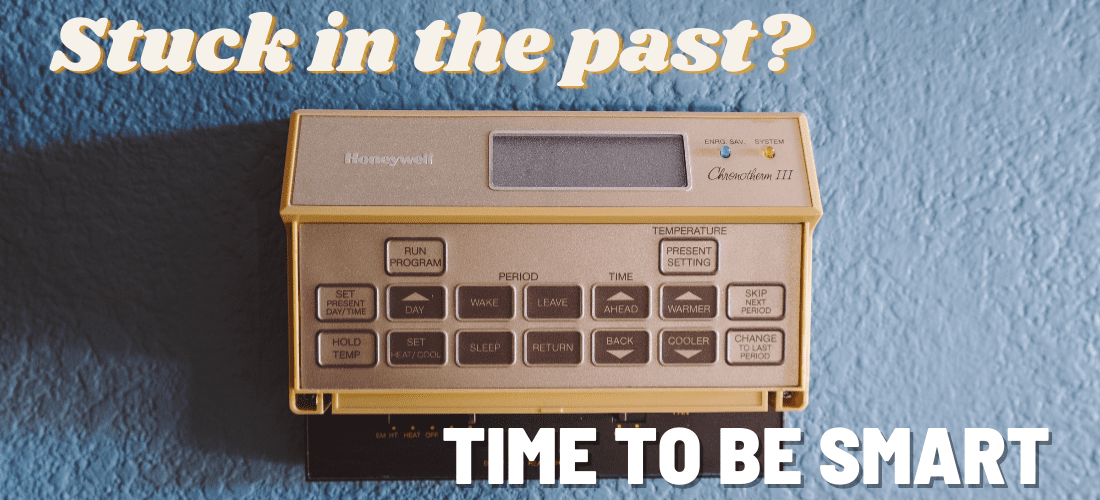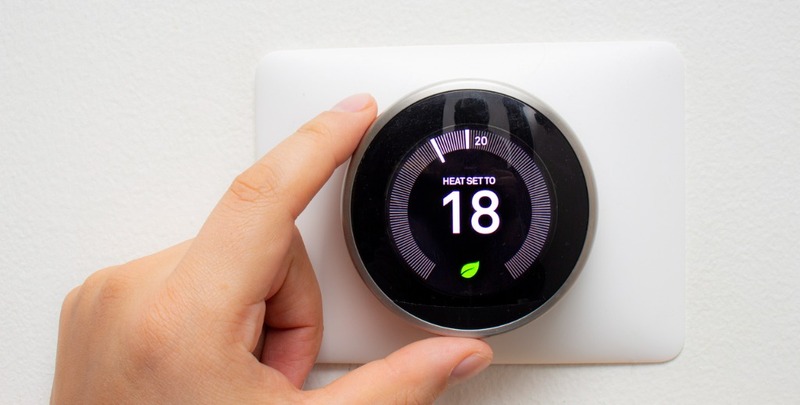Smart thermostat technology is one of the best heating and cooling features. It’s a strong example that technological advancements extend well beyond the smartphone in your hand. It’s something everyone can take advantage of, too.
Most new ducted heating and cooling systems are paired with existing thermostats that deliver smart capabilities. However, some don’t have premium features and are lacking in ultimate efficiency.
Third-party options such as Nest, Honeywell, Sensi and ecobee are leaders in the industry. But are they actually adaptable to all ducted heating systems in Australia? What’s the real difference when it comes to built-in or third-party? If you want to save energy and save money, what’s the best way to go?
If you have lingering questions about how smart thermostats work and how they work with HVAC systems, here is what you need to know about the best smart thermostats on the market.
What You Must Know About Smart Thermostats in Australia
Before we go too far, there is one important thing you must know about smart thermostats in Australia.
They may not work.
Products like ecobee or Nest are typically designed for American or European markets. That’s why you can easily find plenty of videos about the simple DIY installation of a smart thermostat in the United States.
Products are designed for American wiring and often refer to a C (common) wire. Australia is slightly different; modern home wiring includes active wires (brown), a neutral wire (blue/black), and an earth/ground wire (green/yellow).
There is also a chance the thermostat you’re looking at buying is suited to hydronic heating, for example.
Our recommendation is to thoroughly research your desired third-party smart thermostat and consult with a licensed electrician or technician before buying it. There may be more work involved than you anticipate.
The Best Smart Thermostat Features
It might seem pretty straightforward to expect quality features from all smart thermostats, but they’re truly not all built the same. Some certainly deliver more convenience and features than others.
The main benefit of a thermostat, and especially those integrated with advanced technology, is efficiency. This benefits both energy efficiency and consumption, plus your heating and cooling costs.
Many modern systems are Wi-Fi compatible, while some also work on Bluetooth. Wi-Fi thermostats offer simple and effective connections to smart home systems such as Google Home, Amazon Echo & Alexa, plus the Apple HomeKit.
Not only does this mean you can use a connected app to control heating and cooling from your phone or other smart home devices, but you can also use voice commands while at home.
Now, the specific smart features will depend on the model, so you will see differences between the Nest and ecobee, for example. But in a premium model, you could expect to see:
- Smart sensors that pick up individual hot or cold spots in different rooms
- Built-in smart home capabilities for voice control and streaming integration
- Smartphone and app controls
- Humidity sensors
- 7-day programming and customisable temperature schedules
- The ability to learn and adapt to individual routines for advanced efficiency
- System pausing when doors or windows are recognisably open
- Intuitive, full coloured displays
There is a lot to love when you look in the right places. If you’ve got a complicated HVAC system, connected thermostats can make it easy to run.

What’s the Difference: Brand Name vs Third Party
Modern ducted heating and cooling systems come with inbuilt controllers. They’re incredibly simple. Many leading brands also have connected apps, including the likes of Daikin, while some like Rinnai have optional Wi-Fi connectivity.
And with all that in mind you’re probably wondering what the difference is. What makes a third-party smart thermostat better than a Daikin Nav Ease Controller or MagIQtouch Controller by Seeley International?
The answer is … personal preference. Most smart thermostats will do the job, but will they suit your needs?
You can expect programmable temperature schedules, rapid heating and cooling, timers, temperature limits, zone controls and voice control. Wi-Fi thermostat connectivity also means you can use smart apps, smart devices, wireless controls, smart home controls and other customisable settings.
These systems are already integrated and will be installed with your brand new system. The only thing is that they cannot be retrofitted to other types of units. So, if you are looking to just add a new thermostat to an older reverse cycle system, a third-party smart thermostat might be the best option.
Do the research and shop around, that way you’ll find the best smart thermostat for your heating and cooling system.
How You Can Benefit From Smart Thermostat Technology
The great thing about smart thermostats is that they’re compatible with all sorts of ducted air conditioning systems, including gas ducted heating, reverse cycle units and evaporative cooling. You’ll get to enjoy the benefits 12 months of the year.
Your HVAC system can reach your target temperature before you get out of bed in the morning or arrive home from work at night. Save money by never using your HVAC system when it isn’t needed.
According to independent studies performed on American households with a Nest Learning thermostat, there were savings of 10-12% on heating and 15% on cooling. The smart thermostat had paid for itself within two years.
Similar performance in Australian homes can be expected. Just think of the reduced energy usage when you can control everything from your smartphone, while the smart thermostat learns about your usage patterns, too. You can even choose to use multiple thermostats, particularly in a larger home with a sizeable HVAC system.
And although it might seem like an excess when you’re happy to stick with the on/off switch and temperature settings you had on your old thermostat, there is nothing wrong with embracing the best smart thermostat technology. Once you’re set up with the best smart thermostat for your needs, you’ll notice the difference in your energy costs.
But if you are a little unsure about the right step to take, feel free to contact your local heating and cooling specialist – like Air Con Service Near Me. We can help you make the best decision for long-term smart climate control with your HVAC system.
Please note: This information is provided for advice purposes only. Regulations differ from state to state, so please consult your local authorities or an industry professional before proceeding with any work. See our Terms & Conditions here.

